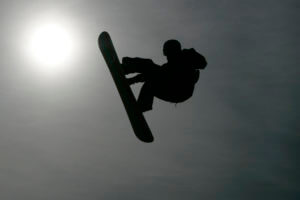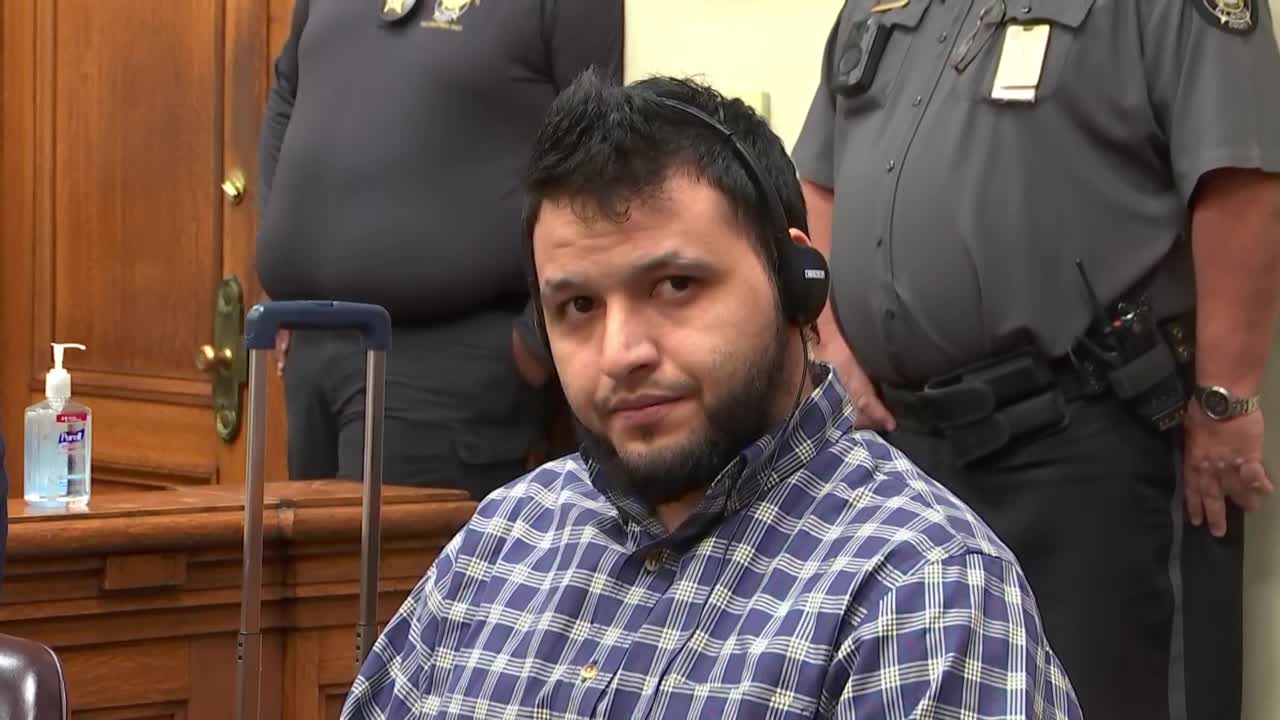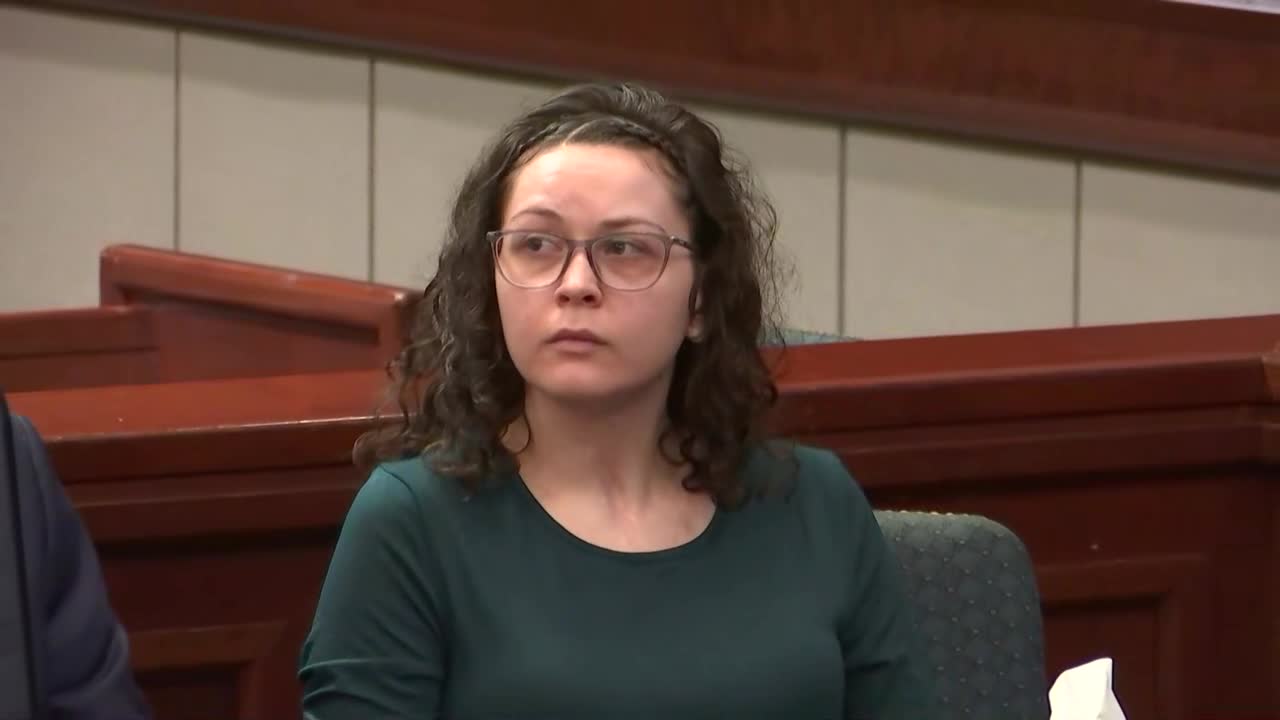By EDDIE PELLS AP National Writer
DENVER (AP) — When former members of the U.S. snowboarding team wanted to report sex-abuse allegations against a longtime coach, they received conflicting information that left them unsure of where to turn — or whether they wanted to pursue the cases at all.
An Instagram post during the Olympics by a former U.S. team member led to allegations that coach Peter Foley had molested them, coerced them into taking naked pictures, crawled into bed with them and nurtured an atmosphere in which women were treated as sex objects.

FILE – A silhouette of a snowboarder in action in a heat during the FIS World Cup snowboarding big air competition at the Battersea Power Station in London, Saturday, Oct. 25, 2008. When former members of the U.S. snowboarding team sought to report sex-abuse allegations against a longtime coach, they received conflicting information that left them unsure of where to turn — or whether they wanted to pursue the cases at all. (AP Photo/Sang Tan, File)
The episode has raised questions as to whether the reporting system for sex-abuse cases in Olympic sports, redesigned in the wake of former gymnastics doctor Larry Nassar’s abuse of hundreds of athletes, is working the way it should some five years since the overhaul.
Foley has denied wrongdoing. His attorney, Howard Jacobs, said that as of March 30 — 10 days after Foley was fired by the U.S. Ski & Snowboard federation and more than seven weeks after the allegations began surfacing — the 56-year-old coach had not been contacted by the U.S. Center for SafeSport, the organization formed to investigate claims such as those involving Foley.
“We only received the allegations from the U.S. Center for SafeSport after I emailed them to request that they provide them,” Jacobs said.
The Associated Press reviewed a series of emails between the athletes, an attorney at the U.S. Ski & Snowboard federation and employees at the U.S. Center for SafeSport that ensued after the initial social-media post by snowboarder Callan Chythlook-Sifsof. The correspondence painted a picture of athletes who didn’t trust their own sports federation to handle the cases appropriately and a SafeSport center that had received information on the case but would not pursue it unless it heard from the accusers themselves.
One email to USSS attorney Alison Pitt sent by a SafeSport intake coordinator said athletes “need to be educated that if they are not willing to come forward, be named and participate in the process, they are in effect choosing to participate in a self-fulfilling prophecy, in that nothing can or will be done to the accused.”
The email continued by saying accusers “seem to believe they can throw out allegations and Foley will be removed.”
That correspondence conflicts with the center’s own bylaws, which state “nothing in this Code shall be construed to require a victim of child abuse or other misconduct to self-report.” The bylaws also warn that anonymous reports can limit the center’s ability to respond.
Asked for details about this and other emails, spokeswoman Annie Skinner said the center does not comment about particular cases “to protect the integrity of the process and the confidentiality of affected individuals.”
“Correspondence with an NGB about a particular matter should not be considered a comprehensive representation of the center’s information or investigative intentions,” Skinner said.
While the SafeSport Center asked, and waited, for victims to come forward, Pitt, the USSS lawyer, might have had a potentially chilling effect on one athlete’s decision about whether to contact the center. An ESPN report that detailed the allegations quoted an unnamed Olympic medalist as saying the attorney described an “extensive and challenging” reporting process.
“It did make me question whether I wanted to go through with that process,” the athlete said.
USSS CEO Sophie Goldschmidt told AP that Pitt was “transparent that the process may take time” in her discussion with the athlete, but assured her that reporting to the SafeSport Center was the only way for the case to be resolved.
It took more than five weeks for either oversight organization to take decisive action against Foley: U.S. Ski & Snowboard fired him as a result of its own workplace investigation on March 20, two days after the SafeSport Center put him on temporary suspension pending its abuse investigation.
The SafeSport Center was formed after dozens of athletes across several sports detailed decades of abuse allegations that were not handled properly by U.S. Olympic and Paralympic Committee and the sports organizations it oversaw. One reason it was formed was to prevent conflicts of interest that arose when executives or employees of a sports organization tried to resolve sex-abuse disputes involving athletes in their sport.
What happened between Chythlook-Sifsof’s initial accusations and the now-current investigation into Foley drew the attention of Sen. Charles Grassley, R-Iowa, who sent USSS a letter suggesting it was skirting rules that call for the center to have exclusive jurisdiction in investigating sex-abuse complaints.
In his letter, Grassley said USSS interfered by conducting its own investigation instead of filtering the entire process through the SafeSport Center, and “has failed to make notifications regarding sexual misconduct to the center.”
USSS responded to Grassley with its own letter that says there is a “grave misunderstanding” about the actions the federation took when it first heard of the allegations.
AP reviewed several emails and documents that show USSS contacted the SafeSport center immediately upon learning of Chythlook-Sifsof’s Instagram post.
But the initial contact between USSS and the SafeSport Center did not result in any sanction for Foley by the center. Though the U.S. Olympic and Paralympic Committee had imposed “temporary measures” to restrict Foley’s contact with athletes through the end of the Olympics, USSS grew more concerned as the snowboard team approached a trip to Austria for a post-Olympics competition in early March. The USOPC’s measures expired after the Olympics.
In a Feb. 16 email to Pitt, SafeSport Center vice president Bobby Click says “based on the information the center has, we have chosen not to implement any types of measure.”
The next day, an intake coordinator at the center emailed Pitt and said she had interviewed five “claimants,” all of whom denied misconduct.
“If I do not get a participating claimant soon, we will be closing” the case, the coordinator wrote.
The emails further pressing the athletes to come forward were sent March 14.
Over the same span, a USSS board member, Lisa Kosglow, contacted the former Olympic medalist interviewed in the ESPN story and told her “Peter is so devastated” about the allegations. ESPN reported Kosglow told the medalist Foley had asked Kosglow to reach out to her. The medalist told Kosglow she was one of the women hurt by Foley.
USSS acknowledged that Kosglow did not report any of this to the SafeSport Center and had subsequently resigned her seat.
“This was a mistake, which we regret,” USSS said in a statement.
But USSS stood firm on its decision to temporarily suspend and eventually fire Foley while it opened and then resolved its own investigation on workplace bullying and a toxic environment — a probe that stemmed from the initial sex-abuse allegations.
“Inevitably there was some overlap between the center’s sexual misconduct investigation and the U.S. Ski & Snowboard investigation into other workplace misconduct,” the federation said.
Meanwhile, as emails between USSS and the center went back and forth, a handful of athletes, including Chythlook-Sifsof, took their cases to the center, which opened an investigation that led to Foley’s temporary suspension. It came two days before his firing and more than five weeks after the original Instagram post.
“If not for USSS’s determination that Coach Foley’s conduct (even outside of the Center’s investigation into sexual misconduct) did not comport with the values of USSS, Coach Foley would have continued to have contact with athletes until the Center decided to act nearly four weeks later,” Goldschmidt wrote in the USSS’s response to Grassley.










